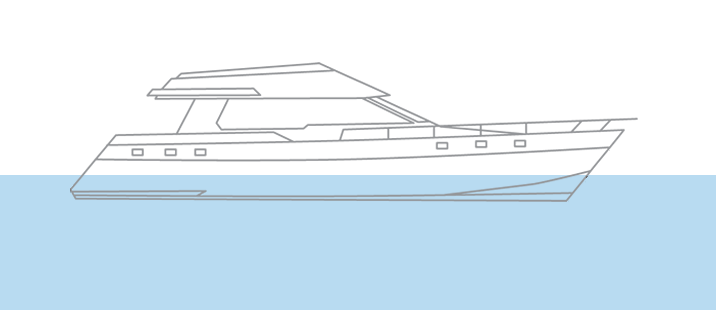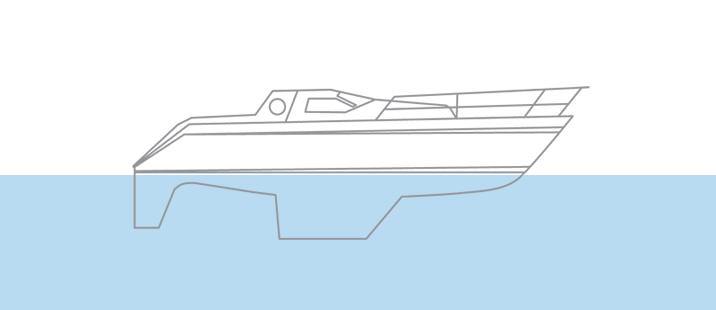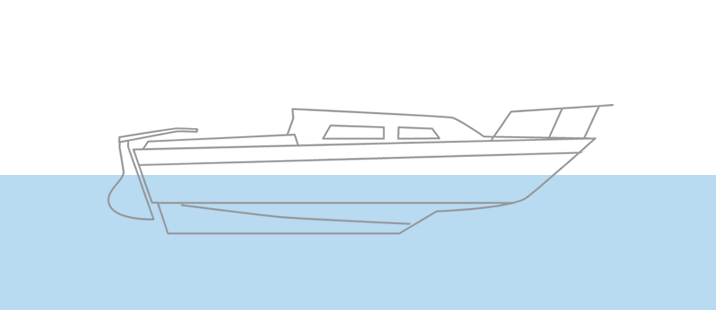Scrubbing and burnishing
Find out why you may need or want to scrub or burnish and the best ways to complete these tasks.
Scrubbing / cleaning
What is scrubbing: This is the act of using a brush to vigorously clean the paint.
Why do you need to scrub? Many boaters may want to clean away fouling from their boat's hull during the lifetime of its antifouling paint. There are many do’s and don’ts associated with this activity however.
- Most antifoulings, even so-called hard antifouling paints, are generally softer when immersed. Scrubbing can remove even good paint, so never scrub antifouling roughly, unless it is a special type (which is rare these days).
Wipe down with a soft sponge if slime is building up and take care if your antifouling is an ablative or self-polishing type, as you will more easily remove good paint, which will reduce the lifetime of the system.
If you have a rather heavy build up that is resistant to being removed with a sponge, try using a green or grey Scotch-Brite pad - but go lightly as otherwise you will remove good paint.
When cleaning at the waterline, a light pressure wash with fresh water can be all that is required.
If you need something more, brushing maybe required; start with a very soft bristle brush in a horizontal or downwards motion. Brushing upwards will only transfer wet antifouling paint onto your topsides.
With hard types of antifouling paint, the active materials leach from within the paint outwards. Therefore the top layer of paint is likely to have a reduced biocide content towards the latter part, plus it could be partially clogged with sea debris such as mud and highly resistant diatoms. A gentle scrub at around 6 – 9 months may help to remove this layer and assist in retaining performance if the product appears to be building up a level of fouling growth. Again, scrub only as hard as is required in order to remove as little paint as possible.
Burnishing
What is Burnishing: Burnishing, in its true sense, means to polish, using for example very fine cutting compounds, as might be used to cut and polish auto paints.
Why Burnish? With burnishing, you can obtain a glossy/shiny polished surface and a smoother finish. A smoother finish will decrease drag, reduce fuel burn in the case of powered vessels, increase boat speed and aid maneuverability.
Cautions: Antifoulings that can truly be burnished tend to have some limitations with antifouling performance, and so the trend these days is towards slightly softer products so genuine burnishing is less a practical option.
How can I obtain a racing finish?
- Modern day Burnishing is best carried out on a hard antifouling type product, using for example 400 then 600 grade paper wet so as to reduce any hazard from dust inhalation of the biocides used in the antifouling paint.
- Using a hard antifouling that is type-marked as "suitable for racing finishes" will help obtain a smoother finish as special raw materials are used in the formulation to aid this process.
- This process will remove a percentage of good antifouling paint and reduce the overall life of the product, so that should be taken into account when deciding to opt for such a finish.
Can I improve hull smoothness if using an ablative/eroding/polishing type antifouling?
- A traditional hard or eroding/ablative type paint will increase in surface roughness over time by a few microns sufficient to lead to some slight increase in fuel consumption and/or a reduction in hull speed.
- Products listed as self-polishing copolymer types however have an inbuilt smoothing action that reduces this development of paint roughness, and are useful where the size of the vessel makes hull maintenance more difficult to carry out.
- There is nothing to stop you from wet sanding any ablative/eroding type antifouling if you wish to obtain a smoother finish for any reason. Just remember that the paint is much softer, so take extreme care that you do not wet sand right through, and use the finest grade paper wet that removes sufficiently to provide the smoothness you want.
How much paint do I need?
We'll help you calculate how much paint is needed.
What product do you want to paint
What type of boat?

Full bodied craft

Fin keeled racing craft

Medium draft racing craft
What is the underwater area?
Show Formulations1 x LWL x (B+D) = Underwater Area (m2)
0.5 x LWL x (B+D) = Underwater Area (m2)
0.75 x LWL x (B+D) = Underwater Area (m2)



Abbreviations
LOA = Length Overall
LWL = Length Waterline
B = Beam
D = Draft
F = Freeboard
What application method?
Recommended no. of coats: ?
How many coats do you want to apply?
If you put less than the minimum recommended numbers of coats, it may affect the performance of the coating.
To paint a ? x ? x ? ??, with ? coats
You'll need ? litres of
Warning that this tool is an estimator only
View productPaint your boat like a pro
Find the best products to keep your boat in great condition
Get all the support you need to paint with confidence
Benefit from our continuous innovation and scientific expertise






